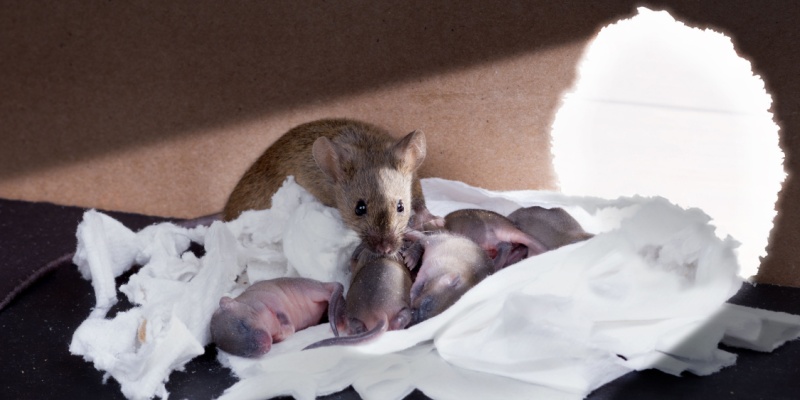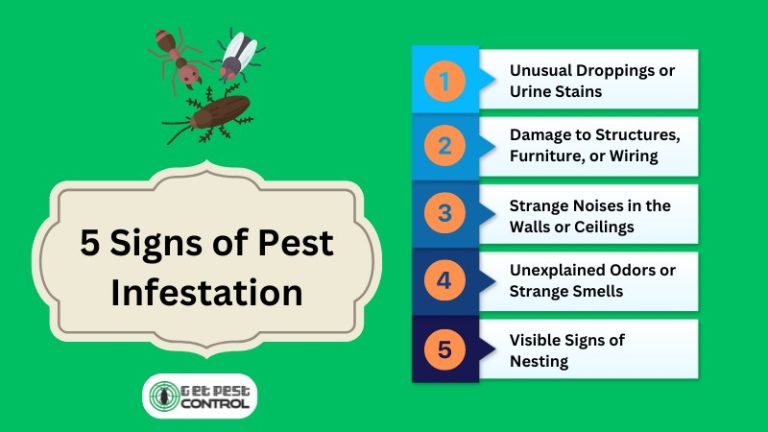Imagine relaxing in your cozy living room when suddenly, you spot something darting across the floor. Or perhaps, you’ve noticed strange noises at night or mysterious damage to your furniture.
These unsettling experiences might be signs of an indoor pest problem lurking within your home. You might think pests are only an outdoor issue, but they can sneak into your sanctuary, causing havoc without you even realizing it. Understanding these subtle signals is crucial for maintaining a healthy and comfortable living environment.
If left unchecked, pests can lead to significant damage and even health risks for you and your loved ones. Are you curious to know if these little invaders have infiltrated your space? By recognizing the top signs of an indoor pest problem, you can take proactive steps to protect your home and peace of mind. Stay with us as we delve into the unmistakable signs that your home might be under siege by unwanted guests. Identifying these indicators early on can save you time, money, and stress, ensuring your home remains the safe haven you deserve.
Common Pest Indicators
Strange sounds like scratching or scuttling might suggest pests are nearby. Unpleasant odors often indicate hidden infestations. Droppings, holes in walls, or chewed wires further confirm an indoor pest problem.
Identifying signs of a pest problem in your home can be challenging, especially when these uninvited guests are experts at hiding. Pests often leave subtle hints of their presence, and noticing these indicators early can save you a lot of trouble. Let’s explore some common signs that might suggest you have an indoor pest issue.Droppings And Tracks
Pests often leave droppings behind, and these can vary in size and shape depending on the type of pest. Finding small, dark pellet-like droppings might indicate rodents, while smaller, dust-like droppings could suggest insects like cockroaches. Tracks are another giveaway. Rodents tend to leave greasy marks along baseboards, while insects might leave trails in dust or across countertops. Have you noticed any unusual trails in your home lately?Gnaw Marks And Damage
Rodents love to chew, and they’ll gnaw on anything to keep their teeth sharp. You might find gnaw marks on furniture, wires, or food packaging. This isn’t just an annoyance; it can be a fire hazard if they chew through electrical wires. Insects can also cause noticeable damage. Termites, for instance, leave behind hollowed-out wood, which can compromise the structure of your home. Have you checked your wooden furniture and structures for signs of damage? Recognizing these signs early can help you take action before a minor problem becomes a major infestation. Keep your eyes peeled for these indicators, and don’t hesitate to seek professional help if you suspect a pest problem. What steps will you take today to protect your home?
Credit: libertyplus.libertymutual.com
Unusual Noises
Strange sounds like scratching or scurrying could mean pests are inside your home. These noises often come from walls or ceilings. Hearing them at night? It might be time to investigate further.
Unusual noises in your home might seem like a minor inconvenience, but they can be a telltale sign of an indoor pest problem. You might shrug off these sounds as part of your home’s natural ambiance. However, paying closer attention could save you from a bigger pest issue down the line. ###Scratching Sounds
Have you ever paused in the middle of the night to listen to faint scratching sounds? These noises might come from your walls, ceiling, or floor. Rodents like mice and rats are nocturnal, and they often make scratching sounds as they move around searching for food or creating nests. You may notice these sounds more prominently in quiet environments. If you hear them consistently, it might be time to investigate further. Ignoring these sounds can lead to more extensive damage to your home as these pests chew through wiring and insulation. ###Buzzing Or Clicking
Buzzing or clicking noises can also indicate an unwelcome guest in your home. Insects such as termites or carpenter ants might be the culprits. Termites make clicking sounds as they tunnel through wood. Have you ever heard a persistent buzzing near a window or light fixture? This could be a sign of a bee or wasp nest nearby. These noises are not just annoying; they can signal potential harm to your home’s structure and your safety. Could these sounds be in your home, and you haven’t noticed? Next time you hear something odd, pause and listen. It might just be the clue you need to catch a pest problem early.Strange Odors
Strange odors in your home can indicate a pest problem. These smells are often the first sign. They may seem unusual or unpleasant. Identifying these odors early can prevent bigger issues.
Musty Smells
Musty smells often point to a pest infestation. Rodents and insects leave droppings that create this odor. It resembles damp or stale air. It’s a warning sign of nesting areas. These areas can harbor more pests. Check hidden corners and basements for nests.
Pungent Aromas
Pungent aromas can signal a pest invasion. Certain bugs, like cockroaches, emit strong smells. These aromas are sharp and unpleasant. They linger and are difficult to ignore. Such smells might suggest a large pest presence. Inspect areas where food and water are accessible.
Visible Nests
Spotting visible nests indoors can signal a pest issue. These nests often appear in corners or hidden spaces. Regularly check attics and basements for signs of nests.
Discovering visible nests in your home is a clear signal you might have an indoor pest problem. These nests are more than just unsightly; they can indicate an active infestation that could lead to bigger issues if not addressed. Identifying and understanding these signs can help you take swift action before the situation worsens.Cobwebs And Webbing
Cobwebs are not just a sign of neglect; they often signify the presence of spiders. If you notice an increase in cobwebs in corners, basements, or attics, it’s time to investigate further. Spiders create webs to catch prey, so finding many webs could mean there’s a healthy supply of insects in your home, indicating a potential pest problem. I remember once ignoring a small cobweb in the corner of my garage, thinking it was harmless. A few weeks later, I discovered a family of spiders had taken up residence, leading to an unpleasant and time-consuming cleanup. Don’t make the same mistake; tackle cobwebs as soon as you spot them.Burrows And Holes
Burrows and holes in walls, floors, or furniture are strong indicators of pests like rodents or termites. These creatures can cause structural damage and health risks if left unchecked. Have you noticed small holes in your wooden furniture or baseboards? It might be time to inspect for termites, as they can wreak havoc silently. Once, while rearranging my living room, I discovered tiny holes in the wooden legs of my sofa. Upon closer inspection, I realized termites had infested the area. This prompted an immediate call to pest control, saving me from further damage. Always stay alert for new holes or burrows; they’re often the first sign of a hidden problem. Visible nests are not something to ignore or procrastinate over. Early detection can save you time, money, and stress. Have you checked your home for these signs lately?Pest Sightings
Strange droppings and chewed wires hint at indoor pests. Odd sounds and musky odors can also signal trouble. Unexplained stains or gnaw marks are clear indicators of unwanted guests.
Pest sightings can be unsettling. You might be relaxing at home and suddenly notice a little critter scurrying across the floor. How do you know if this is just a one-time intruder or the tip of an infestation iceberg? Regular sightings of pests often indicate a bigger problem lurking within your walls. Let’s dive into the tell-tale signs you might be dealing with an indoor pest problem.Insect Infestations
Finding insects inside your home can be more than just an annoyance. Have you noticed tiny ants marching in line toward the kitchen or bathroom? This could mean they’re nesting nearby. Spotting cockroaches, especially in daylight, is an alarming sign of a serious infestation. These pests are nocturnal and prefer to stay hidden, so seeing them out and about indicates their numbers are high. You may also find discarded wings or body parts near windows or light fixtures. This often points to a termite problem, and if left unchecked, it can lead to structural damage.Rodent Presence
Rats and mice are sneaky guests that leave behind clues of their presence. Have you found small, dark droppings in corners, under the sink, or in the pantry? These are clear signs rodents have moved in. Listen for unusual sounds at night. Scratching or scurrying noises in your walls or attic are a strong indication that rodents are nesting. Ever noticed gnawed wires, chewed-up food packaging, or damaged furniture? Rodents have strong teeth and love to chew. These signs mean they’re making themselves comfortable at your expense. — Pest sightings are not just minor inconveniences; they’re signals urging you to act. Are you noticing these signs in your home? It’s time to take a closer look and address the issue before it escalates. Your home deserves to be a sanctuary, free from uninvited guests.
Credit: drivebyeexterminators.com
Structural Damage
Cracks in walls and ceilings may indicate pest activity. Gnawed wood or damaged furniture often signal rodents or termites. Listen for unusual noises, like scratching, behind walls.
Structural damage in your home can be a tell-tale sign of an indoor pest problem that needs urgent attention. Pests like termites, rodents, and ants don’t just make themselves at home—they actively damage it. Ignoring these signs can lead to costly repairs and compromise the safety of your living space.Damaged Wood
One of the most common signs of pest-induced structural damage is damaged wood. Termites and carpenter ants are notorious for feasting on wooden structures. If you notice hollow-sounding wood, sawdust-like frass, or visible tunnels in wooden surfaces, pests might be the culprits. A friend once found small holes in her wooden furniture and dismissed it as wear and tear. Months later, she discovered her entire living room floor needed replacing due to a termite infestation. Could you be overlooking something similar in your home?Chewed Wires
Chewed wires are not just a sign of pests—they’re a serious fire hazard. Rodents like mice and rats love gnawing on electrical wires, which can lead to short circuits or even fires. Look for signs of gnawed cables in your attic, basement, or behind appliances. A neighbor once had a mysterious power outage. After some investigation, they found mice had chewed through the wires behind their fridge. It was a costly fix, but it could have been much worse if left unchecked. Have you checked your wires lately? By keeping an eye out for these signs, you can catch pest problems early and save yourself from future headaches. Being proactive can protect your home and your wallet. If you spot any of these issues, it’s time to take action.Health Symptoms
Sneezing, itchy skin, and unexplained coughs may signal indoor pest problems. Bites, droppings, and unusual odors further indicate pests lurking. Address these symptoms promptly to maintain a healthy home environment.
Indoor pest problems don’t just disrupt your peace—they might also affect your health. If you’ve been experiencing unusual health symptoms, pests could be the hidden culprits. Recognizing these signs can help you take timely action to protect your well-being. ###Allergic Reactions
Have you noticed more sneezing or itching lately? Pests like cockroaches, dust mites, and rodents can trigger allergic reactions. You might find yourself with a runny nose, itchy eyes, or even skin rashes. Dust mite droppings and cockroach saliva are common allergens found indoors. These microscopic particles easily become airborne and can linger in your home. Consider how frequently these symptoms occur and if they ease when you’re away from home. If over-the-counter allergy meds aren’t doing the trick, it’s worth considering an inspection for pests. You may just uncover the root of your health woes. ###Bites And Irritations
Waking up with mysterious bites or red welts? Bed bugs, fleas, and mosquitoes might be to blame. These pests are notorious for feeding on human blood, leaving behind itchy and irritating bites. Bed bugs are especially sneaky, often hiding in mattress seams and biting while you sleep. Fleas, on the other hand, could hitch a ride on your pets, spreading quickly throughout your home. If you notice a pattern—bites appearing in a line or cluster—it could be a telltale sign of bed bugs. Pay attention to any accompanying symptoms like swelling or a burning sensation. Think about the times you’ve felt itchy without a clear reason. Could these pesky pests be the unseen irritants? Identifying these health symptoms early can save you from ongoing discomfort and potential health issues. Have you experienced any of these signs at home? Taking action now can prevent more serious problems down the line.
Credit: triopestcontrol.com
Frequently Asked Questions
How Might You Know If You Have A Problem With Pests?
Spot signs like droppings, gnawed materials, or unusual smells. Notice increased insect activity or visible pests. Listen for scratching noises in walls or ceilings. Check for damaged plants or property. Monitor pets for unusual behavior.
What Is The Hardest Household Pest To Get Rid Of?
Termites are the hardest household pests to eliminate. They cause significant structural damage and often remain hidden. Professional pest control is usually necessary for effective removal. Regular inspections can help prevent infestations and minimize damage.
How Do You Know If Your House Is Infested?
Notice unusual droppings, chewed wires, or gnaw marks. Spot nests or burrows in hidden areas. Hear scratching noises in walls or ceilings. Detect unpleasant odors or see pest sightings. Inspect for damaged plants or food packaging.
What Is Most Likely To Indicate A Pest Infestation?
Signs of pest infestation include droppings, nests, foul odors, damaged plants, and visible pests. Listen for unusual noises. Inspect for holes and gnaw marks on furniture. Check for dead insects or discarded wings near windows. Look out for bite marks on food items.
Regular inspections can help detect early signs.
Conclusion
Detecting pests early saves time and money. Signs like droppings and damage warn of trouble. Listen for strange noises or foul smells. Stay alert to unusual behaviors in pets. These clues often point to pest issues. Regular checks help catch problems fast.
Act promptly to prevent infestations. Call professionals for effective solutions. Protect your home with smart pest management. Keep environments clean and clutter-free. This discourages pests from settling in. Awareness is key for a pest-free home. Use these tips to maintain a healthy living space.
Stay vigilant, stay safe.


